 Port Credit Marine Surveys & Yacht Delivery Society of Accredited Marine Surveyors 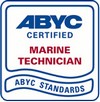 American Boat & Yacht Council  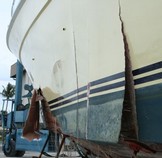  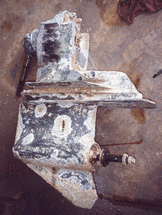
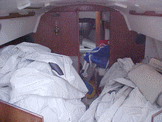 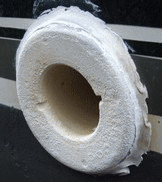 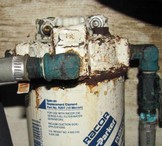 
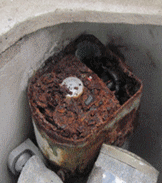  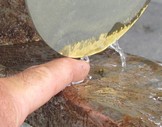

|
Seasickness and CO poisoning symptoms are
alarmingly similar The U.S. Coast Guard (USCG) is investigating solutions, and attempting to raise awareness about what they call an "epidemic of carbon monoxide (CO) poisoning on boats". Boat design characteristics and boaters unawareness of the hazards are implicated in the rapidly increasing number of reported deaths both inside and outside of houseboats, cruisers, and ski boats. Talk to your marine surveyor about your specific boat. A report from National Institute for Occupational Safety and Health (NIOSH) detailing recent investigations at Lake Powell, Utah, from 1990 to 2000 found 111 CO poisoning, 74 on houseboats and 37 on other types of pleasure craft. A new NIOSH report, "Boat-Related Carbon Monoxide (CO) poisoning" cited 93 fatalities and 377 non-fatal CO related poisoning identified on or around boats through March 19, 2003. |
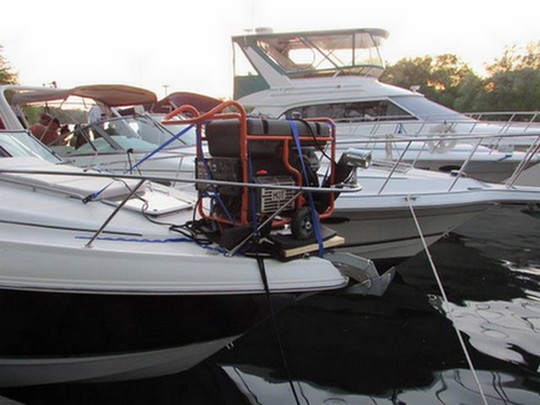 |
|
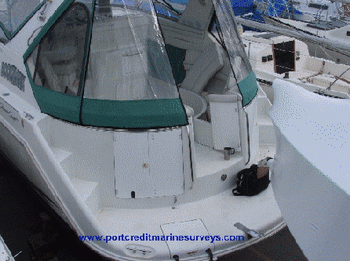 |
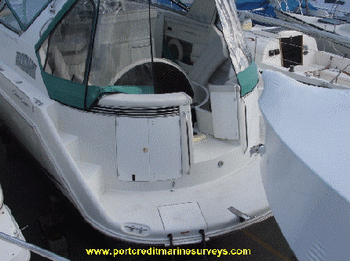 |
||
| Consider the lovely canvas work on this Chris
Craft (above left) and note how in the photo
at right the canvas unsnaps to reveal blocked
ventilation louvers. Any CO produced in the engine compartment is going straight into a fully enclosed cockpit. This boat is dangerous ! |
|||
| The USCG stresses that these numbers under report the actual number of incidents that have
occurred because many emergency personnel
are not fully aware of the problem and while
drowning may be the actual cause of death
the drowning was due to loss of consciousness
caused by CO poisoning. CO is a potentially deadly gas that is odourless, colourless and tasteless and is found as a by product of internal combustion engines or any appliance that burns fossil fuels. CO enters the bloodstream through the lungs and displaces the oxygen needed by the body with a resulting hypoxia of body tissues. Symptoms of CO poisoning include rapid onset of headache fatigue, nausea, dizziness, confusion, convulsions and death. Note: The early symptoms are almost identical to those of seasickness. It has been known for some time that carbon monoxide can reach lethal concentrations from generator exhaust that gathers at the stern of houseboats, but only in the last couple of years has it been found that carbon monoxide can gather in deadly concentrations in the cockpits of cruisers, belowdecks from propane appliances and leaking exhaust systems and behind ski boats and even personal watercraft. The highest concentrations of CO are often around swim platforms and cockpits and can actually be sucked inboard by the "draft" effect of a moving vessel, It has been generally assumed that CO poisoning was not possible outdoors however one recent fatality was that of a man working in the cockpit of his sail boat with a portable generator running on the dock. The CO drifted down into the cockpit and killed him. CO poisoning in and outside of boats is now beginning to receive a higher level of attention. At recent meeting USCG, NIOSH and the boating industry met to discuss the state of current research, education, and solutions to the CO risks associated with recreational vessels. The was to examine methods to prevent boat-related CO poisoning and to review the status of current research and regulations. The meeting focused primarily on the problems of CO emissions from houseboat generators and engines from all types of pleasure craft, including cabin cruisers and ski boats. As evidenced from the number of poisoning on all types of pleasure craft, generator exhausts are only part of the CO problem. Drive engine exhaust is responsible for over half of the CO related deaths noted by NIOSH. Boat builders seeking National Marine Manufacturers Association certification for their boats now have to install carbon monoxide detectors inside the cabin if the craft has living accommodations below. These devices don't function well in outside environments but may be better than nothing. The requirement was added to the NMMA's certification standards in March 2001 to for model year 2002. Finally, it appears that litigation may provide an incentive to the industry as a couple of engine manufactures have lost wrongful death suits and one manufacturer has added warning labels on its ski boats advising users of the dangers of CO near the swim platform. The labels were added as part of settlement agreement that stemmed from litigation involving the death of a 10-year-old boy in Alabama. |
|||
| All fossil fuel burning systems, whether engines or appliances produce some CO. Unfortunately we have no mandatory requirements for CO detectors on pleasure craft in Canada but they are easily installed and remember that a well tuned engine produces less CO than a poorly maintained engine. Regularly inspect your exhaust system and ensure that all exhaust hose clamps are doubled and secure. If you see water staining on your manifold it means that gases as well as water are leaking. Repair it immediately. If your guests complain of seasickness don't write them off as "landlubbers" but move them to an area exposed to fresh moving air. Learn the symptoms of CO poisoning and the medically recommended actions. . | CO Exposure Limits | ||
| 35 ppm - 200 ppm - 800 ppm - 1200 ppm - 6400 ppm - 12,800 PPM - |
Maximum allowed by EPA outside for 1 hour
Noticeable symptoms Serious symptoms and even death Immediately dangerous to life and health Death in 10 minutes Death in less than three minutes. |
||
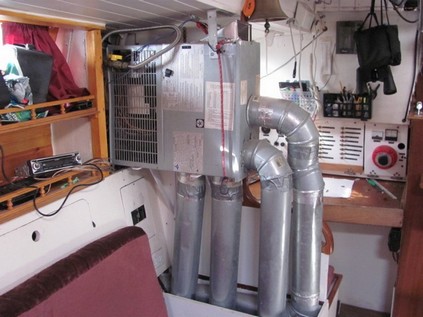 Natural gas furnace running on Propane !!!!!! |
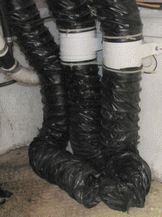 Intake & output adjacent = circular fumes !!!!!! |
||
| Carbon Monoxide Check List (It take only
minutes).
- Make sure you know where exhaust outlets are located on your vessel. - Educate all passengers about the symptoms of CO poisoning and where CO may accumulate. - When docked or rafted with another boat, be aware of exhaust emissions from the other boat. - Confirm that water flows from the exhaust outlet when the engines and generator are started. - Listen for any change in exhaust sound, which could indicate an exhaust component failure. - Test the operation of each CO detector by pressing the test button. - Make sure all exhaust and blower duct clamps are in place and secure. - Look for exhaust leaking from exhaust system components. Signs include rust and/or black streaking, water leaks, corroded or cracked fittings. - Inspect rubber exhaust hoses for burned, cracked, or deteriorated sections. All rubber hoses should be firm but pliable and free of kinks. - Ensure that your engines and generators are properly tuned, and well maintained. - Inspect water pump impellers and the pump housings. Replace if worn. Make sure cooling systems are in working condition. - Clean, inspect, and confirm proper operation of the generator cooling water anti-siphon valve (if equipped). If you have gasoline engines you should also be aware of what it takes to make a Safe Gasoline Ventilation System and If you have propane onboard you should also understand what's required for a Safe Propane Installation. Diesel Engine CO Although diesel engines produce less CO than gasoline or propane, I was told by a haematoligist/client the effects can be cumulative as it can take as long as 2 weeks for CO to clear from the blood and a little CO every day from diesel over a few days can build up enough to be a concern. Most CO studies done in the 70's to early 90's did not differentiate between diesel and gas CO when investigating combustion engine poisonings. Many studies also indicated it was near impossible to be poisoned in open air yet in the early 2000's USCG and NIOSH investigations found a large number of boating related poisonings had occured outside the boats (cockpits/swim platforms) from gasoline generators. Diesel related poisonings when they were confirmed were written off as anomalies by most researchers. Complicating matters is that published safe CO levels between the US, Europe and Australia vary by as much as 300% in some circumstances. My take .... caution is warranted. |
|||